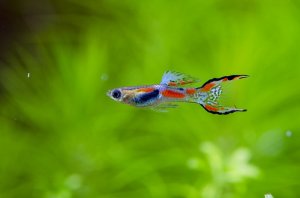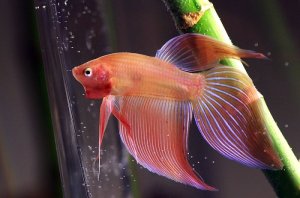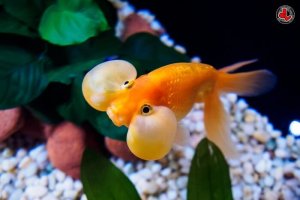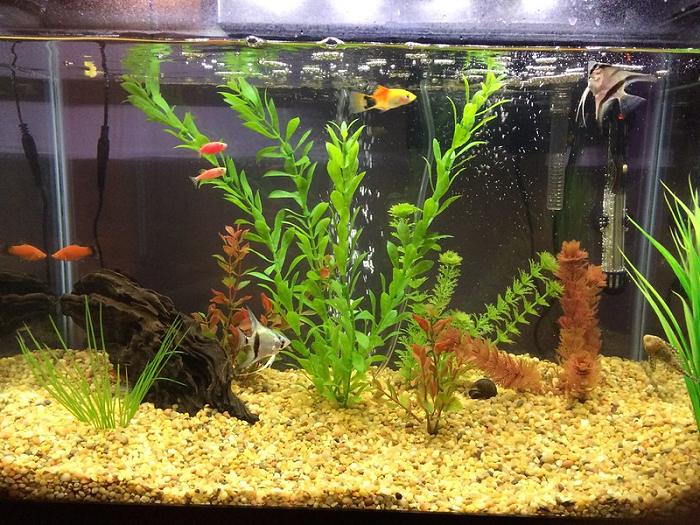
Angelfish are some of the most popular freshwater fish species among aquarium enthusiasts. They are known for their unique shape, elegant appearance, and peaceful nature.
These aquatic pets make great additions to any community tank, and adding suitable tank mates can enhance the overall appeal of your aquarium. However, selecting the right angelfish tank mates can be a daunting task. In this article, we will discuss the 10 best tank mates for angelfish.
1. Neon Tetra
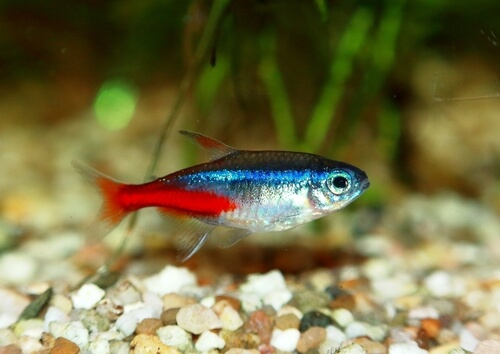
Neon tetras are small, non-aggressive fish that are compatible with angelfish due to their similar nature. They come in a variety of bright colors, making them a popular choice for all aquarium enthusiasts. Neon tetras are schooling fish and should be kept in groups of six or more. They are fish that are hardy and easy to care for, making them a great choice for beginner aquarium hobbyists and one of the best tank mates for angelfish
Even though neon tetras can make good tank mates for angelfish, there are a few things to keep in mind.
- At least a 20-gallon tank for a group of neon tetras
- They prefer a pH between 5.5 and 7.5.
Angelfish and tetras can tolerate a wide range of pH values. So as long as the pH is stable and within the specified range, they should be fine.
To ensure tetras feel safe and comfortable, keep the tank well-planted with plenty of hiding places for the neon tetras. Angelfish can be aggressive and may nip at the fins of smaller fish like neon tetras. Providing plenty of places to hide can help to reduce stress and prevent aggression.
2. Guppies
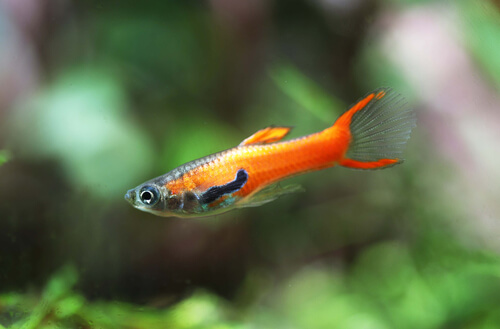
Guppies are another popular fish species that make great tank mates for angelfish. They are small and peaceful, and their bright colors add vibrancy to any aquarium. Guppies are also livebearers, which means they give birth to live young. This can be a fascinating process to watch in your aquarium. However, it’s important to note that guppies can breed rapidly, so keep an eye on their population if you decide to add them to your aquarium.
While guppies can also make good tank mates for angelfish, keep these essential points in mind. They are smaller fish and can be seen as potential prey by angelfish. Therefore, it’s important to ensure that the angelfish are not aggressive towards the guppies and that they have plenty of hiding places and plants to feel safe in the tank.
These aquatic pets are generally more tolerant of a broader range of water parameters than angelfish. However, it’s still necessary to maintain stable water conditions and monitor the water quality regularly.
Guppies are active and social fish that enjoy swimming in schools. Therefore, keeping at least six guppies together in the tank is essential to keep them happy and healthy.
3. Corydoras
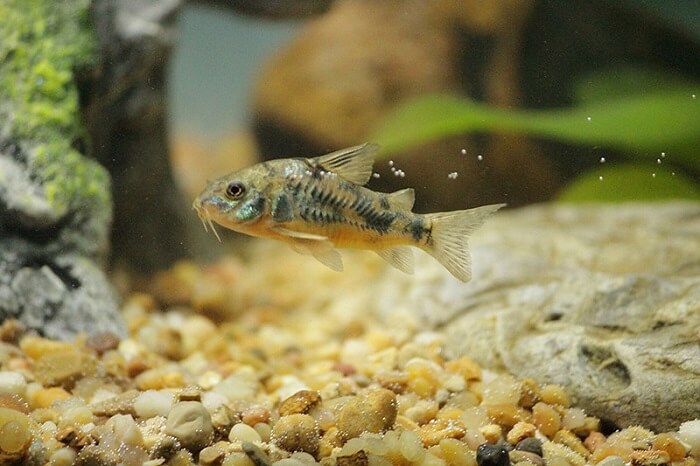
Corydoras are bottom-dwelling fish that are great tank mates for angelfish. They are excellent helpers as they keep the aquarium clean by eating algae and other debris that pile up at the bottom of the tank. They are omnivores and will eat many different kinds of foods, including pellets, flakes, and live or frozen foods. Cory’s are also peaceful and relatively easy to care for, making them a great addition to any community tank.
Like guppies, corydoras catfish are social and should be kept in groups of at least six. They will enjoy a well-planted tank with hiding places such as caves and other decorations. This will give them a sense of security and make them more comfortable in the tank.
In terms of water parameters, corydoras catfish prefer:
- A pH between 6.5 and 7.5
- Temperature between 72°F and 78°F.
These conditions are similar to those preferred by angelfish, so they can easily coexist in the same tank.
Corydoras catfish are a great addition to an angelfish tank. However, the tank must be large enough to accommodate both species. The water parameters and feeding habits also need to be well-managed.
4. Discus
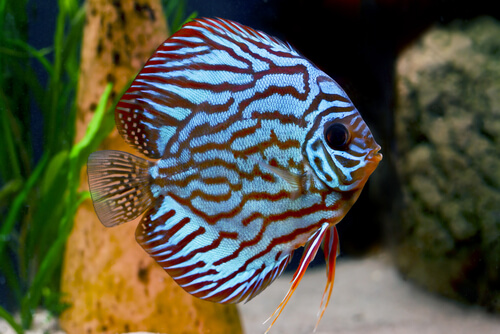
Discus are another popular cichlid species that are compatible with angelfish due to their similar water requirements and peaceful nature. However, they are slightly more challenging to care for than other fish species on this list and require a larger tank.
To help your discus fish be compatible with angelfish tank mates, here are things to consider before keeping them together. First, discus and angelfish are large fish and require a spacious tank of at least 50 gallons, which is recommended for a small group.
Angelfish and discus also require clean water with consistent water parameters such as these:
- A pH between 6.0 and 7.0
- A temperature between 80°F and 86°F
In addition, ensuring that the water quality is maintained with regular water changes and proper filtration is essential.
Both discus and angelfish can be territorial and aggressive, especially during breeding. Therefore, it’s necessary to provide a safe space by adding plants or decorations to reduce stress and aggression. However, overcrowding the tank can also lead to territorial disputes. Hence, keeping a manageable number of fish in the tank is essential. Generally, discus and angelfish can coexist in the same tank with proper care and attention to their individual needs.
5. Harlequin Rasbora
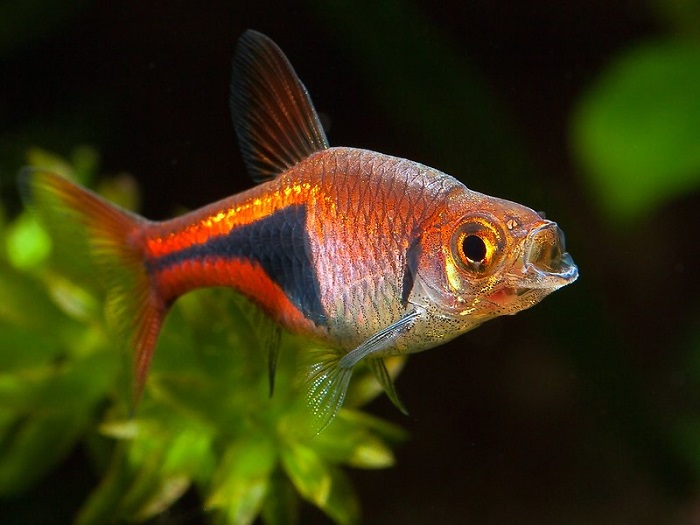
Harlequin Rasboras can also make some of the best tank mates for angelfish. They have a pleasant temperament, are very active, and have a similar temperature and pH range to angelfish, making them compatible companions.
Parameters to consider when placing a harlequin rasbora in a tank:
- A pH between 6.0 and 7.5
- A temperature range of 73°F to 82°F
In terms of feeding, harlequin rasboras are omnivores. They will eat different types of foods, including flakes, pellets, and live or frozen foods. They are not picky eaters and will easily accept most types of food. Keeping harlequin rasboras in a school and providing adequate hiding places and open swimming areas will make these aquatic pets happy.
6. Bristlenose Pleco
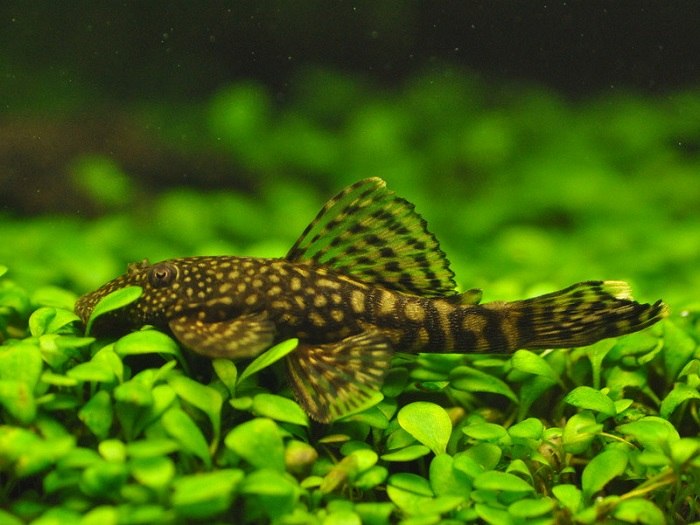
Bristlenose plecos are small, tranquil fish that are excellent at keeping the aquarium clean. They are algae-eaters and help to keep the tank free of algae. These aquatic creatures are bottom-dwelling fish that can grow up to six inches long. They are the best tank mates for angelfish because they occupy different parts of the tank.
They require a spacious tank with plenty of plants and decorations, such as caves, driftwood, or rocks, to feel secure. Because they are herbivores, they require a diet rich in algae and vegetable matter. They can also be fed algae wafers or blanched vegetables such as zucchini or cucumber.
Parameters that best suit these fish:
- A pH between 6.5 and 7.5
- A temperature range of 60°F to 80°F
Bristlenose plecos have protective spines on their bodies that can potentially harm angelfish. Therefore, it’s vital to ensure that there is enough space in the tank for both species to swim comfortably without coming into contact with each other.
7. Swordtails
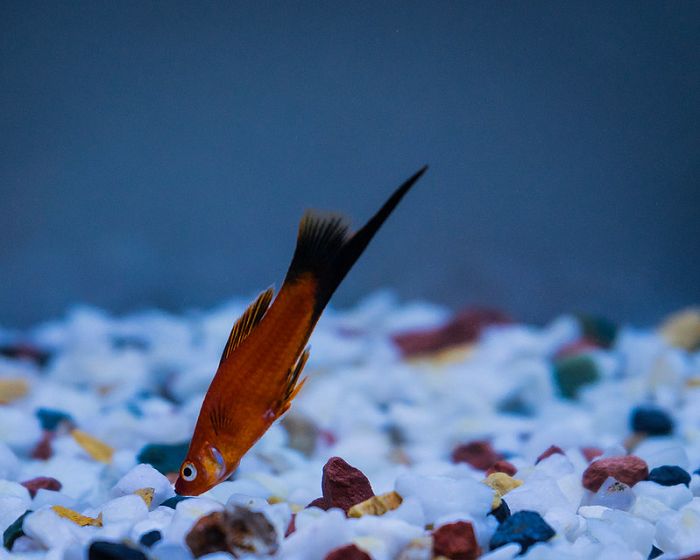
Swordtails are another livebearer species that are fantastic angelfish tank mates. These aquatic pets are easy to care for and are a popular choice amongst aquarium owners. They are active and playful fish that prefer a planted tank with plenty of swimming space. While swordtails can be compatible tank mates for angelfish, it’s important to consider a few things before keeping them together.
Important parameters:
- They prefer a slightly alkaline pH between 7.2 and 8.0
- A temperature range of 72°F to 79°F
Swordtails can breed frequently and produce a lot of fries, which can create an overstocked tank. Therefore, it’s best to have a plan in place for dealing with excess fry. For example, you could try placing them in another tank or finding a new home for them.
8. Kribensis
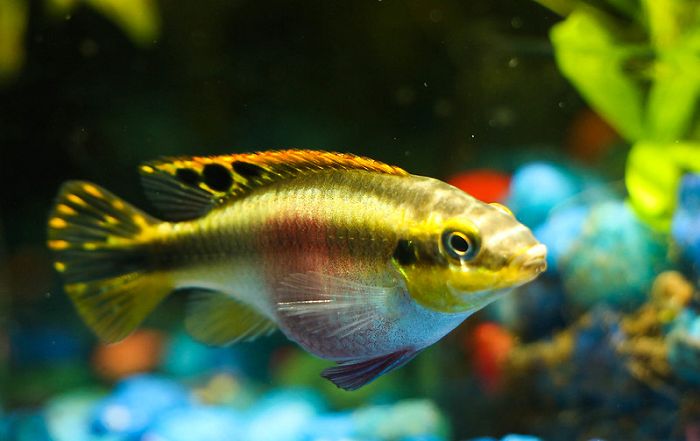
Kribensis, also known as Krib or Kribby, are small, easy-going cichlids that make great tank mates for angelfish. They come in a variety of colors and patterns, and they are relatively easy to care for.
Kribensis are omnivores and require a varied diet of both plant and animal matter. They will readily accept flake, pellet, frozen foods, and live foods such as bloodworms or brine shrimp. However, they can be territorial and aggressive towards other fish during breeding, so it’s best to provide enough hiding places to reduce stress during this period.
Things to consider when setting up an adequate tank for a kribensis:
- A pH between 6.0 and 7.5
- A temperature range of 72°F to 82°F, which is similar to that preferred by angelfish.
Overall, Kribensis can make good tank mates for angelfish as long as the correct parameters are maintained, and a large enough tank is used. A balanced diet and monitoring for aggression can also help ensure a harmonious tank environment.
9. Cherry Barb
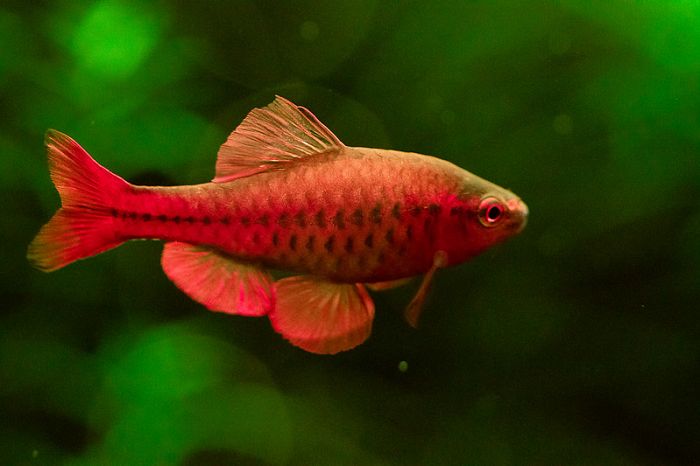
Cherry barbs are friendly fish that are compatible with angelfish tankmates as they require similar tank care. To ensure a thriving community aquarium with cherry barbs and angelfish, it is necessary to ensure that your tank meets both these species’ requirements.
Consider these requirements when setting up your tank:
- Cherry barbs prefer a slightly acidic pH between 6.0 and 7.0
- A temperature range of 72°F to 82°F
Cherry barbs are smaller fish that are omnivores and are really easy to feed. They will eat the same foods as angelfish, so you won’t need to stress too much when it comes to their diet. One thing to look out for, though, is that they can be nippy towards long-finned fish, such as angelfish. A lovely spacious tank that allows both species to swim freely will fix that problem.
When adding these fish to your tank, remember that these are schooling fish, so groups of six or more are usually recommended. Adding enough cherry barbs helps create a comfortable and secure group. Cherry barbs can make wonderful angelfish tank mates as long as the tank you house them in is large enough to accommodate both species, and the water conditions and diet are adequately maintained.
10. Rainbowfish
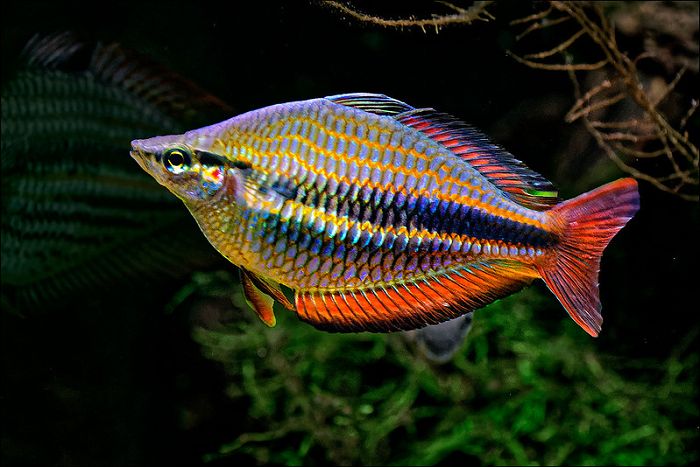
Rainbow fish have an elongated, torpedo-shaped body that can grow up to six inches in length. They have large eyes and small mouths, and their bodies are covered in tiny, shimmering scales that give them their distinctive rainbow-like appearance. They are part of the family Melanotaeniidae, which is made up of small to medium-sized freshwater fish that are prized by aquarium enthusiasts for their vibrant colors and attractive personalities.
Rainbowfish are active and social fish that prefer a planted tank with plenty of swimming space.
When it comes to parameters, they prefer:
- Slightly alkaline pH between 7.0 and 8.0
- A temperature range of 76°F to 82°F
Because rainbowfish are omnivores, a mixed diet of both plant and animal matter will suit them well. Angelfish are also omnivores, so providing both species with a balanced diet is important.
They usually are easy to care for and can thrive in community tanks with other peaceful species. However, it’s essential to ensure that their tanks are well-maintained with good filtration and they are also provided with plenty of space.
The Bottom Line
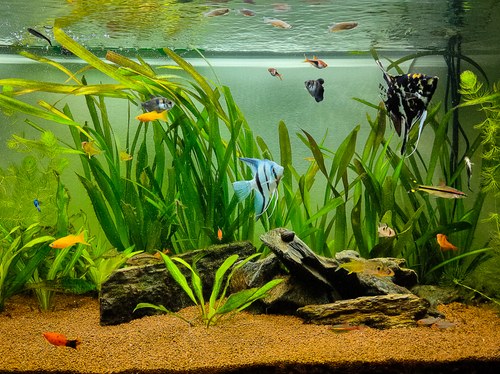
Choosing suitable angelfish tank mates is crucial for creating a peaceful and harmonious aquarium environment. While there are many compatible species to choose from, it is important to consider factors such as tank size, temperament, and feeding habits when selecting suitable tank mates for your angelfish.
With careful planning and attention to compatibility, you can create a thriving and beautiful aquatic community that includes your angelfish and their compatible tank mates.
Also, Read


